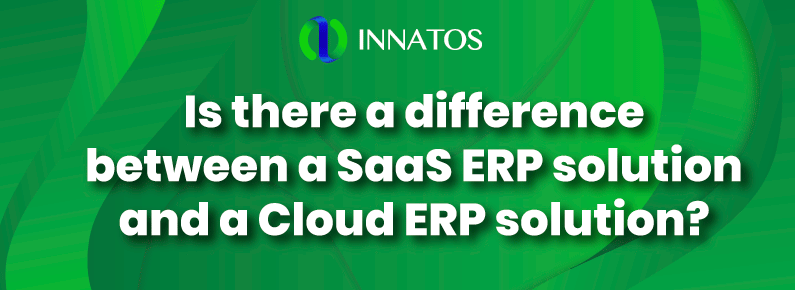Communication climate, the elephant in the room
Communication climate, the elephant in the room. As internal communicators, we tend to spend most of our time creating messages and seeking to deliver them through an effective array of online and offline channels. This alone is more than enough to consume all of our energy.
Communication climate, a metaphor for the quality of the relationships within the company, is one of the key drivers of effective staff communication. Despite a growing body of scientific research that underscores the vital role of communication climate, the topic seems to remain conspicuously absent in the average internal communication strategy.
Is the communication climate the elephant in the room?
What is communication climate?
 Communication climate, a specific aspect of organizational climate, is usually thought of as having four dimensions: openness and trust, participation, and supportiveness.
Communication climate, a specific aspect of organizational climate, is usually thought of as having four dimensions: openness and trust, participation, and supportiveness.
Openness and trust refer to the degree to which employees perceive the company’s communication practices as open.
Participation refers to the extent to which the staff is having a voice in the company. Correlate strongly and embrace all aspects of communication: downward, upward and lateral.
Supportiveness refers to the experience of feeling taken seriously by supervisors and colleagues.
An organization’s communication climate can be thought of as the sum of many different micro-climates on the level of individual teams.
Why should internal communicators care about the communication?
 The key thing to remember about communication climate is this: it is the single most important influencer of organizational identification, which in turn is the most important influencer of strategically aligned behavior. In other words: the how of internal communication is more important than the what.
The key thing to remember about communication climate is this: it is the single most important influencer of organizational identification, which in turn is the most important influencer of strategically aligned behavior. In other words: the how of internal communication is more important than the what.
The quality of an organization’s communication climate has real-world consequences, both positive and negative.
Southwest Airlines, for example, has anchored numerous communication climate principles in its vision, strategy and management, and communication practices. This approach has helped Southwest to maintain a top position in its industry for decades, as well as benefit from a highly engaged and loyal workforce.
Unfortunately, ‘climate exemplars’ such as Southwest are dramatically outnumbered by lesser gods, among which Boeing is only the latest to dominate the headlines.
It is not far-fetched to allege that a communication climate gone awry was a significant factor in most of the corporate downfalls and disasters the world has seen in the last decades. Think of NASA, Enron, BP, Nokia, Wells Fargo, the list is endless.
How communication climate influences employee identification and behavior
 A positive communication climate has been found to increase the degree to which employees identify with their organization by strengthening feelings of belonging, self-worth, and purpose.
A positive communication climate has been found to increase the degree to which employees identify with their organization by strengthening feelings of belonging, self-worth, and purpose.
Organizational identification, in turn, stimulates organizational citizenship behavior, the kind of behavior that constitutes going the extra mile, rather than just doing your job well.
On the negative side, a lack of openness, in which staff’s opinions are ignored, can give rise to a climate of silence and the staff will be relentless to speak out on important issues. This, at the same time, leads to a decrease in staff motivation.
A climate of silence makes an organization blind to internal and or external developments that need attention, with often devastating consequences for reputation and even the bottom line.
A climate of silence makes an organization blind to internal and or external developments that need attention, with often devastating consequences for reputation and even the bottom line.
Is communication climate the elephant in the room?
 Peculiar enough, communication climate seems to be off the radar more often than not in internal communication strategies.
Peculiar enough, communication climate seems to be off the radar more often than not in internal communication strategies.
Managing the communication climate requires practices that are often at odds with internal communicators’ predominant focus on messaging and channels. As a relative, the internal communication apple doesn’t fall far from the tree.
An often-heard argument is that communication climate is not a strategic priority or even that it is kind of a taboo subject in the eyes of top and/or middle managers. After all, issues with openness and trust in communication may well reflect flaws in leadership and management practices.
This makes the communication climate a potentially sensitive topic. Quite understandably, communication advisers reason that if leadership is not supportive, to insist on identifying the elephant in the room equals choosing a battle they are bound to lose. This does not make the elephant disappear.
Who is accountable for keeping an eye on communication?
 Communication climate is too important for the health of an organization to be ignored.
Communication climate is too important for the health of an organization to be ignored.
Leaders may fear that communication climate-related issues may reflect poorly on them.
Nevertheless, few experts will deny that, apart from defining and implementing strategy, a leader’s main role is to energize people.
To ignore what is probably the most effective instrument available for tracking the effectiveness of their efforts seems to indicate that a higher power, most likely non-executive board members should intervene.
Other stakeholders in a positive communication — besides corporate and internal communication — could be risk management, compliance, and HR.
Measuring and monitoring communication
 If it’s important, measure it. The employee engagement scan, if your organization has one, is usually a good starting point. Most engagement questionnaires include several dimensions, providing a useful bird’s eye view. To obtain a more granular view, as well as actionable insights into underlying patterns of interaction, you can do a deep dive with a purely climate-focused questionnaire.
If it’s important, measure it. The employee engagement scan, if your organization has one, is usually a good starting point. Most engagement questionnaires include several dimensions, providing a useful bird’s eye view. To obtain a more granular view, as well as actionable insights into underlying patterns of interaction, you can do a deep dive with a purely climate-focused questionnaire.
In the meantime, if no hard data is available, you can start by looking for the following common tell-tale signs of a negative emotional climate:
– An unhealthy degree of side conversations.
– Lack of attention for risks, uncertainties, and problems in the development process of a new offering or project.
– Subject matter experts say little or nothing at meetings.
– People automatically agree with leaders at meetings on crucial issues.
Creating a positive communication climate.
 The main building blocks of a positive communication are management, leadership, and internal communication practices that focus on:
The main building blocks of a positive communication are management, leadership, and internal communication practices that focus on:
Open, transparent communication about the organization’s strategy and performance.
Communicating clear and ambitious (but not unrealistic) goals, including on the individual level.
Keeping employees well informed. Communication climate is strongly affected by the adequacy of both personal and organizational information, including personal feedback.
Taking employees seriously, demonstrating interest and supportiveness in work-related issues that employees and colleagues are confronting.
If you’d like to learn more about this topic, corporate silence, and organizational dialogue, leave your questions in the comment field.









Leave a Reply
Want to join the discussion?Feel free to contribute!